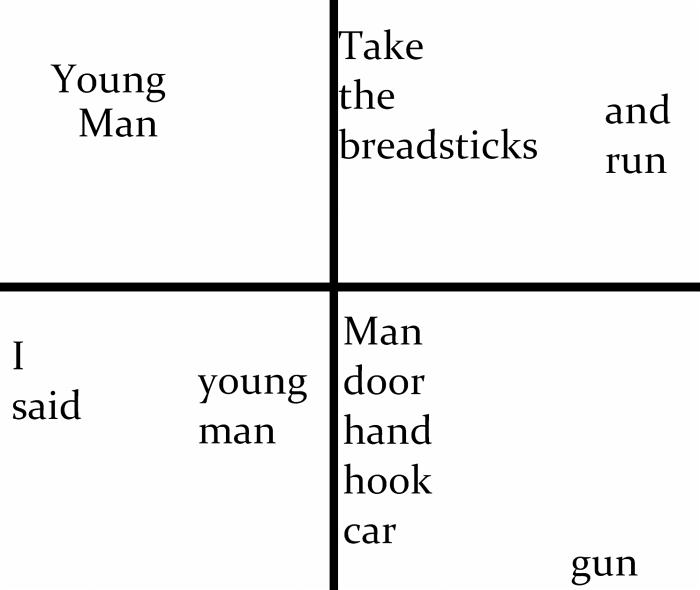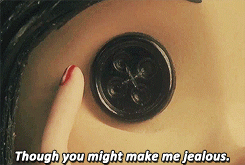Let me explain why.
It’s a common misconception that the date chosen for celebrating
Christ’s Nativity was selected due to its proximity to pagan (particularly Roman) holidays on
the Gentile calendar. This was because, according to such theorist,
early Christians wanted to draw in the pagans by celebrating Holy Days
around the times of their usual seasonal festivals.
However, this makes no sense for two reasons. First, pagans hated
members of this monotheistic religion, just as they despised the Jews.
And the last thing the early Church fathers wanted was to mix their
delicate new religion with impurities that surely come with appealing to
pagan culture. Christians wouldn’t have been welcomed to celebrate anything openly, never mind allowed to undermine important pagan festivals with their own.
Second, what drew pagans to Christianity in the first place was how it differed from pantheist religions they were familiar with. So why on earth would early Christians then try to appeal more
to pagan culture when that had no bearing on conversion? It’s a fallacy
that is contradicted by the “purity” beliefs of the Church.
Keep
in mind the culture of the early Church. They were still fresh,
brand-new, and the early clergy would have been very concerned with the
mixing of religions diluting the Christian message. Most Church
“Doctors” were scrupulous scholars, meticulously researching and
interpreting Holy Scripture from both the New Testament and the Old.
They would have studied the extensive history recorded in books like
Leviticus and Deuteronomy, which recorded the Jews bad experiences and
following consequences that resulted from the Jews mingling too much
amongst the pantheist society. The Doctors would have been keen to avoid repeating these mistakes. (Think of how many seemingly negligible, “harmless” heresies the Church sought to squash early on).
Not
to mention that many well-documented sources (such as King Charlemagne)
indicate the complete abandon of pagan beliefs during conversion. It
makes sense, logically: if you were a new convert, it would be best to avoid any and all reminders of your past faith less you feel tempted to return or re-adopt some aspects of it.
But doesn’t Christmas fall suspiciously close to pagan holidays on the calendar, suggesting at least a connection? Nope.
This misconception became wildly circulated in the 19th century with
the publication of Alexander Hisop, who wrote wildly unsourced claims.
Yule is a Celtic
holiday (Dec 21st – 7th). So why would early Christians settle the
Nativity on a day only celebrated by a fraction of far-West Europe?
There is also claims it was influenced by
Dies Natalis Solis Invicti (Birth of the Unconquered Sun).
However, this
was proposed on Dec. 25th by the pagan Roman emperor Aurelian in 275
AD– after the dates of published works from the Saints
Irenaeus (130 – 202 AD) and Sextus Africus (160 – 240 AD), who I will get to in a moment. Thus, early
Christians (many of Jewish heritage) were associating December 25th as a
date closely associated with Christ long before Aurelian dedicated the
birthday of the sun.
In
fact, many scholarly sources indicate that the winter solstice was NOT a
hotbead for sun-worshiping for pagans. Here’s the most succinct quote: “Thomas
Talley has shown that, although the Emperor Aurelian’s dedication of a
temple to the sun god in the Campus Martius (C.E. 274) probably took
place on the ‘Birthday of the Invincible Sun’ on December 25, the cult
of the sun in pagan Rome ironically did not celebrate the winter
solstice nor any of the other quarter-tense days, as one might expect.” (Michael Alan Anderson)
The principle dates for sun-worship were actually in August, not December.
If anything, Emperor Aurelian purposely chose December 25th for a new, lousy, and unpopular pagan feast to overshadow the ever-growing Christian culture in his empire. The pagan Romans hated monotheism and tried to purge it, hence all the early persecutions within the empire. The truth is that Aurelian wanted to drown out the Christians, not the other way around.
The misconception originated with this quote:
“It
was a custom of the Pagans to celebrate on the same 25 December the
birthday of the Sun, at which they kindled lights in token of festivity.
In these solemnities and revelries the Christians also took part.
Accordingly when the doctors of the Church perceived that the Christians
had a leaning to this festival, they took counsel and resolved that the
true Nativity should be solemnised on that day.” (Christianity and
Paganism in the Fourth to Eighth Centuries, Ramsay MacMullen. Yale:1997,
p. 155)
Many seized this passage as proof of paganism being the
root of Christmas. Yet context is critical.
The original author is Bishop Bar-Salibi, an Eastern Orthodox bishop, writing
to his flock to attempt to explain why Western Catholics celebrated on
the 25th: Eastern Christians traditionally celebrate on Jan 7th. He had only a
cursory knowledge of Western Catholic culture and wrote sparingly, not
particularly well thought-out or with much research. It is, at the very best, a haphazard guess by a foreigner.
One must consider the environment of Roman Christians at the time.
They were actively
persecuted by these same pagans– is it really
likely that those same pagans would take kindly to them adopting their
practices–or that the Christians would want to assimilate the culture
that was trying to wipe them out? Not likely.
Okay,
so Christmas wasn’t chosen to be on December 25th because of any pagan
holidays. So why was the date significant? They didn’t just draw random
dates out of a hat and pick one at random. In order to understand the
date, you have to understand late Jewish culture and how it developed into early Christian culture.
Another common misconception (and directly related to this one) is that Hanukkah is not based in Mosaic Law. It’s
definitely Jewish, but it was not born of any law, command, or decree
like other Jewish holidays (i.e. not born from Moses). It was a way for
the Jews to
remember and celebrate the second dedication of the Temple after the
Maccabean revolt. The celebration always lasted 8 days, starting on the
25th day of the Jewish month of Kislev. The month of Kislev on the Jewish
calendar overlaps the month of December on the Julian/Gregorian
calendar. In fact, sometimes the overlap is so close, that Hanukkah is
celebrated at the same time Christians are celebrating Christmas.
The
apostles decided which laws of Judaism the Early Christians were still
beholden by (Council of Jerusalem, circa 50 AD). Hanukkah, because it
was not Mosaic Law, was not included in this determination because it was simply a tradition of the people rather than a command of God. Remember that many early Christian-Jews still considered themselves to be Jewish. They
would have continued to follow many cultural aspects of Judaism, such
as attending the Temple on the Sabbath, and, by extension, celebrating Hanukkah.
Hanukkah was very much a celebration focused on light, a “rebirth” for
the (earthly) kingdom, and a refreshed covenant with God. It made sense
that Early Christians would therefore feel close to it. However, early
Christians were shunned by the Jews, often kicked out of the culture
completely. They lost track of the Jewish calendar over time, and thus
it’s only natural that they fell into using the Julian calendar as the Gentile
Christians did.
They instead celebrated Hanukkah on December
25th–which was pretty close to Kislev 25th anyways. And–here’s the
kicker– there are 8 days between Dec 25th and Jan 1st, meaning it
perfectly wrapped up the end of the Christian cultural year with
re-dedication (new years revolutions, anyone?). Christmas became the
christened version of Hanukkah in the beginning. This went on for
several centuries in the Early Church.
So how did the Christian
Hanukkah become associated with Christ’s nativity? Early Christians, in accordance with old Jewish custom,
believed that the world was created on Nissan 14, which is about March
25 on the Julian calendar. These Jewish Christians not only associated
the beginning of the world on that date, but also the beginning of the
new world: meaning the conception of Jesus Christ.
To this day, the
Catholic Church (and Lutheran, Anglican) celebrate the Annunciation on
March 25th. Pregnancies last for about 9 months, so count that far ahead
from the date: you get December 25th. Aforementioned Saints Ireaneus
and Sextus Africanus firmly defended this date. Thus, it
was only natural for Christians to adapt their version of Hanukkah into
a celebration of Christ’s nativity. Eventually the 8-day feast was
overshadowed by 12 days, but that’s another discussion irrelevant to
this one.
Here’s the biggest kicker: December 25th wasn’t officially chosen as the date of the Nativity by Church Officials until the Medieval period.
Long after most pagan or pantheist religions had mostly died out. The
date was chosen by tradition of the people’s celebrations and its
connections to the traditional date of the Annunciation (conception of
Our Lord).
So you’ve got two explanations as to how Christmas came
to be: the widely-circulated suggestion of it being based on pagan
practices, mostly prompted by 19th-century misconstructions; versus it
naturally originating from the course of intermingling of Jewish and
Gentile-born early Christians. The latter is supported by a lot of
official documentation by the church, including published works by
several saints/scholars close to the time of origin.
Accepting that
Christmas was not pagan-based, let’s move on. What about the supposedly
pagan customs ingrained in it? Like the Christmas Tree? Yes,
the Franks and Scandinavians worshipped trees. But there is no credible
documentation found that suggests they even brought them into their houses
(in fact, this probably would have been sacrilegious, especially to the Norse:
trees were only ever to be chopped down for absolute necessity, so
having one around for ornamentation would be disrespectful).
St.
Boniface was glorified for the legend of his chopping down of the
(pagan) Donor Oak to prevent human sacrifice, and this act was quite
evangelized. The Germans watched in horror, fearing Thor would strike
them down for this brazen act. Boniface, seeing this, took action. He
indicated a small fir sapling growing close to the roots of the former
sacrifice tree, and used it as a teaching tool: the fir was triangular
in shape, representing the trinity; it was always green, representing
God’s never-ending love for His people; and the needles always point
upwards as God. Boniface suggested that God placed the fir there as a
symbol to the pagans. It is then said that Boniface took a tree into the
later-constructed church, an ever green similar to the fir, during the
winter as a reminder.
Of course, the modern Christmas tree came
later, during the time of the Protestant reformation. It was in Germany,
in an attempt to recreate St. Boniface’s tree. Martin Luther is said to
have first added lighted candles to an evergreen tree, in an attempt to
recreate in his chapel the starlight he saw, shining between trees in a
forest, while walking home one winter night.
There are other
supposedly Pagan symbols used in Christmas celebrations, but most of
those aren’t as widely used or accused as the Christmas Tree.
TL;DR: Christmas comes from Jewish customs, not pagan
I love how many of the notes going against this dont bother to acknowledge any of the sources or references but instead resort to the tried and true “nope your wrong because I said so”

















































